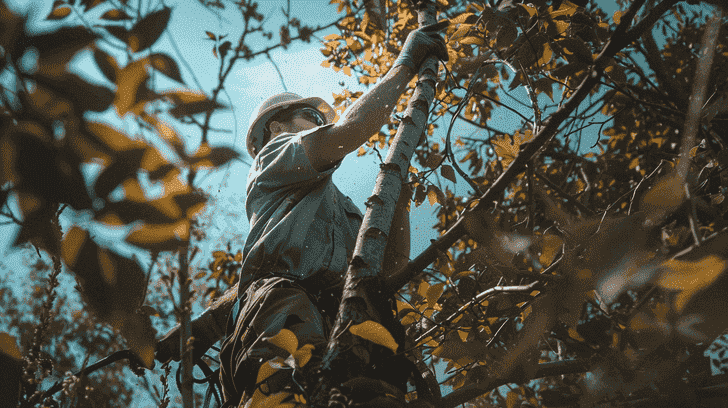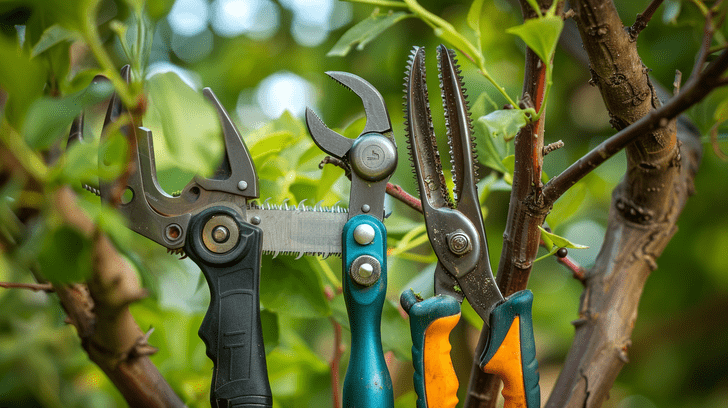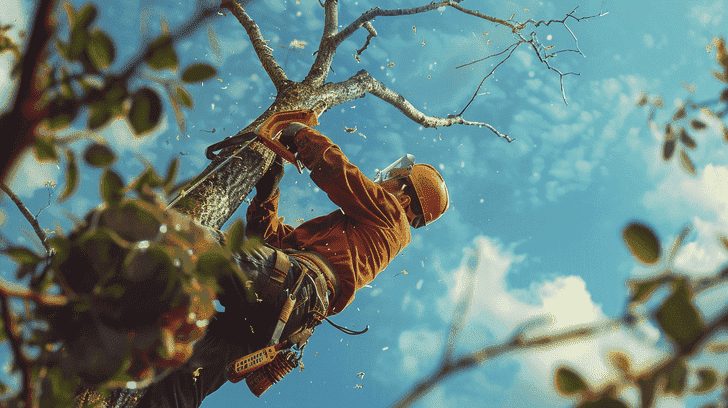Pruning Overgrown Dogwood Trees: A Comprehensive Guide
You’re about to tackle pruning your overgrown dogwood tree, an essential step in maintaining its health and promoting healthy growth.
Pruning enhances the tree’s natural beauty, improves air circulation and sunlight penetration, and directs its energy towards healthy growth.
To get started, you’ll need the right tools, like pruning shears and saws, and a solid understanding of pruning techniques, including when and how to make clean cuts.
Follow a step-by-step guide to assess your tree, remove dead branches, and thin crowded areas. And, take it from there to master the art of pruning your dogwood tree.
Why Prune Your Dogwood Tree?
https://www.youtube.com/watch?v=PrSt4YVKF38 – Prune Like a Pro Dogwood
Pruning your overgrown dogwood tree is essential to maintain its health, promote healthy growth, and enhance its natural beauty.
By pruning your dogwood, you’ll improve air circulation and sunlight penetration, reducing the risk of disease and pests. A well-pruned tree will also have a stronger branch structure, reducing the risk of branch failure.
Additionally, pruning helps maintain a visually appealing shape and size, enhancing the tree’s appearance. When you prune your dogwood, focus on removing dead, diseased, or damaged branches, as well as any branches that are crossing or rubbing against the trunk.
This will allow your tree to direct its energy towards healthy growth, rather than wasting it on damaged areas.
Best Time to Prune Dogwood Trees
You’ll want to prune your dogwood tree during its dormant season, typically from late winter to early spring, when the tree is less stressed and can heal quickly from any cuts.
This is the best time to prune, as the tree is not actively growing and can focus its energy on healing.
Pruning during the dormant season also reduces the risk of disease and pest infestations.
| Season | Pruning Benefits | Pruning Challenges |
| Late Winter | Less stress on the tree, easy to see branch structure | Cold weather may limit pruning duration |
| Early Spring | Tree can heal quickly, new growth is minimal | Risk of disease and pests increases |
| Summer | Prune only what’s necessary, avoid heavy pruning | Tree is stressed, pruning can cause further damage |
| Fall | Prepare tree for winter, remove dead branches | Pruning can stimulate new growth, making the tree more vulnerable to winter damage |
| Active Growth | Prune only what’s necessary, avoid heavy pruning | Tree is stressed, pruning can cause further damage |
Tools Needed for Pruning Dogwood Trees
With your dogwood tree’s pruning schedule in place, it’s time to gather the necessary tools to tackle the task efficiently.
You’ll need a pair of pruning shears, also known as hand pruners, to trim smaller branches and stems. For thicker branches, a pruning saw is essential to make clean cuts. It’s important to use sharp tools to prevent tearing the tree’s bark and promoting healthy healing.
You may also consider gloves and safety glasses to protect yourself from thorns and debris. Having the right tools will make pruning your dogwood tree a more manageable and effective process.
Remember to always prune branches at the branch collar, making a clean cut to promote healthy growth and minimize damage to the tree.
Step-by-Step Guide to Pruning Dogwood Trees
You’re now ready to tackle the pruning process. Start by evaluating your tree, taking note of its overall shape and identifying areas that require attention.
Next, you’ll remove dead or diseased branches, thin out crowded areas, and shape the tree to achieve a balanced, healthy structure.
Assessing Your Tree
Before pruning your overgrown dogwood tree, carefully inspect its structure to identify any dead, diseased, or damaged branches that need removal.
Walk around the tree, inspecting the trunk, branches, and canopy. Look for signs of damage, disease, or pests, such as cracks in the bark, fungal growth, or insect infestations. Check for twigs or branches that are broken, crossing, or rubbing against each other.
| Tree Component | What to Inspect For |
| Trunk | Cracks, cankers, or signs of disease |
| Branches | Dead, diseased, or damaged limbs |
| Canopy | Density, shape, and foliage condition |
| Twigs | Dead, diseased, or damaged tips |
Removing Dead or Diseased Branches
Now that you’ve identified the dead, diseased, or damaged branches, it’s time to remove them, using the correct pruning techniques to prevent further damage and promote healthy growth.
When pruning, always cut outside the branch collar, making a clean cut at a 45-degree angle. Remove dead branches by cutting them off at the base, taking care not to damage the stem.
For diseased branches, prune back to healthy wood, making sure to disinfect your pruning tools between cuts to prevent the spread of disease.
Remove any branches that rub against each other, as this can cause damage and create openings for disease.
Thinning Out Crowded Areas
To thin out crowded areas, identify clusters of branches and select the strongest, most well-placed stems to retain, removing the weaker or redundant growth to allow better air circulation and sunlight penetration. This process will improve the tree’s overall health and appearance.
- Prune branches that are crossing or rubbing against each other, as these can cause damage and create entry points for disease.
- Trim branches that are growing inward or downward, as these can hinder air circulation and create humid microclimates.
- Remove any branches that are diseased, damaged, or dead, as these can spread disease and attract pests.
- Cut back branches that are growing outside the tree’s natural shape, as these can divert energy from the rest of the tree.
- Consider thinning out branches in the center of the tree to improve air circulation and allow more sunlight to reach the inner branches.
Shaping the Tree
With your pruning tools in hand, you’ll shape the dogwood tree by reducing its height, widening its spread, or creating a more balanced canopy, depending on its specific needs and desired aesthetic.
To achieve the desired shape, identify the branch collar, the raised area where the branch meets the trunk. Prune a dogwood tree by cutting just above the branch collar, making a clean cut at a 45-degree angle.
When trimming, remove any weak or crossing branches, and consider thinning out the shrub to allow more sunlight to penetrate.
Aftercare Following Pruning
After pruning, you should monitor your dogwood tree’s response to the pruning process, watching for signs of stress or disease that may require further attention.
Proper aftercare is important to guarantee your tree recovers well from pruning. Here are some essential tips for aftercare:
- Water your tree regularly, especially during hot or dry weather, to prevent water stress.
- Inspect your tree regularly for signs of disease or pest infestation, and prune any damaged or diseased branches promptly.
- Mulch around the base of your tree to retain moisture and suppress weeds.
- Avoid over-fertilizing, as this can cause excessive growth and create new pruning needs.
- Keep an eye on your tree’s growth, and prune as needed to maintain its shape and promote healthy growth.
FAQ
How far back can you cut a dogwood tree?
Pruning a dogwood tree back to about one-third of its height without causing significant stress to the plant is crucial. However, it’s important to prune judiciously, as excessive cutting can harm the tree’s health.
When pruning, consider the following:
- Prune during the dormant season: Prune your dogwood tree when it’s dormant to minimize stress and promote healthy growth.
- Cut back dead or damaged branches: Remove any dead, diseased, or damaged branches to prevent the spread of disease and encourage healthy growth.
- Cut back crossing branches: Remove branches that are rubbing against each other to improve air circulation and reduce the risk of disease.
- Prune for shape: Prune your dogwood tree to maintain a balanced shape and promote even growth.
- Don’t over-prune: Avoid over-pruning, as this can cause stress to the tree and lead to disease or pest issues.
Can dogwood be cut back hard?
While pruning a dogwood tree, you might wonder if it’s possible to cut it back hard. The answer is yes, but with caution. You can prune your dogwood tree back to about 12 inches from the ground, but this should only be done when the tree is dormant.
Cutting back hard will stimulate new growth, but it may take a year or two for the tree to recover. Be sure to prune only the necessary branches, as over-pruning can stress the tree. Remove any dead, diseased, or damaged branches to promote healthy growth.
When pruning, cut just above a growth node, and make clean cuts at a 45-degree angle. This will help the tree heal quickly and reduce the risk of disease.
Can you prune the top of a dogwood tree?
Pruning the top of a dogwood tree is necessary to maintain its shape and promote healthy growth. It’s a task you can accomplish with the right techniques.
When pruning the top, focus on reducing the length of the branches, rather than cutting them off entirely. This will help maintain the tree’s natural shape and encourage new growth.
Here are some key considerations when pruning the top of your dogwood tree:
- Prune branches that are growing inwards or crossing over other branches
- Remove any dead or diseased branches to prevent the spread of disease
- Cut back the tips of branches to encourage bushy growth
- Make clean cuts just above a growth node to promote healthy healing
- Prune during the dormant season to minimize stress on the tree
How do you rejuvenate an old dogwood tree?
Rejuvenating an old dogwood tree requires a combination of pruning, fertilization, and pest management to restore its health and vigor.
You’ll need to prune the tree during its dormant season, removing dead, diseased, or damaged branches.
Cut them back to the trunk or a healthy branch, making clean cuts just above a growth node. This will help the tree direct energy towards healthy growth.
Remove any crossing or rubbing branches to improve air circulation and reduce disease risk.
As you prune, consider the overall shape you want the tree to take, and prune accordingly.
By doing so, you’ll be able to restore your dogwood tree’s natural beauty and promote healthy growth.
Conclusion
With pruning shears in hand, you’ve tamed the unruly beast, transforming your overgrown dogwood tree into a majestic work of art.
As the sun sets, its newly sculpted silhouette stands tall, a proof of your patience and skill.
Like a masterpiece revealed, your pruned dogwood tree now radiates beauty, its refined shape and size a reflection of your dedication to its care.







